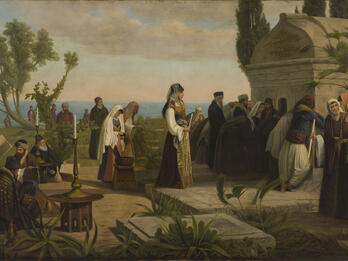Religious Movements in the West and in the Ottoman Empire
Jewish rituals, synagogue spaces, and the prayer service itself came under increasing scrutiny in light of the call for modernization.
In the West, and particularly among German-speaking Jews, in the nineteenth century, Jewish rituals, synagogue spaces, and the prayer service itself came under increasing scrutiny in light of the call for modernization. A search for the “essence of Judaism” prompted an outpouring of religious writings and a spectrum of responses that left Western Ashkenazic Jewry religiously divided along rigid lines: Reform or Liberal, Positive Historical (closely aligned with American Conservative), Neo-Orthodox, and Ultra-Orthodox were just some of the movements that crystallized the varied positions. In addition, many Jews belonged to no formal denomination. In rural areas, filial pietism dominated, whereas in many urban areas some Jews chose the path of radical assimilation (including conversion).
Unlike these divisions in the West, Jewish modernization in the Ottoman Empire followed a different and distinctive trajectory. Just as Muslim societies, even as they modernized, did not radically reconfigure Islam, Jews in the Muslim world adapted in ways that were far less anticlerical. Jews who drifted from the traditional ways did not seek to establish formal denominations. The community remained on the surface religiously cohesive. Many Sephardic rabbinic thinkers of the nineteenth and twentieth centuries saw the Torah as sufficiently capacious to incorporate features of modern life.
The effect of Westernization, coupled with new avenues for professional advancement, changed the face of Jewish culture, generally beginning with the wealthiest socioeconomic classes. Study of religious texts and the prestige of the rabbinate as a career declined. With some exceptions, such as the Baghdad yeshiva Bet Zilkha, founded in 1840 by a towering figure in nineteenth-century Iraqi Jewry, Abdullah Somekh, the cultural focus of the communities in the Islamic orbit shifted. Paradoxically, efforts to revive and sustain Torah study by the late nineteenth century often stemmed from European rabbis traveling east whose published works were circulating more broadly. During this period of flourishing religious productivity, the Karaite community in Crimea continued to produce significant work as well. Its thinkers composed some of the last great compilations of Karaite law, commentary, and theology as well as the last major metanarrative of Karaite history.


